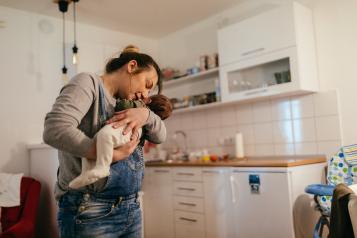What does a great maternity service look like?

When we reviewed what people have been telling local Healthwatch about their experiences of maternity services, we identified five common issues and called for greater involvement of patients in improvements to care.
We spoke to Healthwatch Cumbria which has been working with local Maternity Service Liaison Committees to find out what people think would improve local maternity services.
How did this issue come about?
In August 2015, we were asked by the Royal College of Obstetricians and Gynaecologists implementation group for Cumbria and north Lancashire, to carry out some engagement work to develop an understanding of what women and their families think great maternity services would look like.
What did you do?
We spoke to women who have used maternity services in the last five years, their partners, families and birth support partners and those who may become pregnant in the future.
We asked people to respond to an online survey over a four week period. We promoted the survey at more than 100 events, distributed postcards that people could use to respond and recorded hundreds of conversations with people offering their feedback.
What does a great service look like?
Over 1200 people responded to the survey. Generally, most people were satisfied with the care received throughout pregnancy and after the birth of the baby. However, analysis of the responses highlighted several criteria that need to be in place in a great service, such as:
- Continuity of care throughout the pregnancy, the birth and postnatal period
- Consistency and quality of information and communication
- Postnatal support with breastfeeding
- Support to enable women to make informed decisions and choices
- Accessible and local services
What happened as a result?
The report has been presented to the implementation group which is leading the redesign of maternity services in Cumbria and north Lancashire. It is important that any potential new ways of delivering future maternity services are tested against the criteria we have highlighted.
This project also helped us build stronger links with local Maternity Service Liaison Committees.
Have you received any feedback?
We have received really positive feedback. Cath Broderick, chair of the Royal College of Obstetricians and Gynaecologists Women’s Network, said:
“Hearing from women and families means that we understand their experiences, how they want to use services and can shape services so that they reflect what women believe ‘good’ would look like, not just around delivery but from when a woman is planning her pregnancy, through antenatal care, labour and delivery and the services available after the baby is born.”
Eleanor Hodgson, director for children and families with NHS Cumbria Clinical Commissioning Group, also told us:
“The engagement exercise has been an excellent example of partnership working and the feedback is really helpful. It has already been discussed with the implementation group and we will be seeking action plans from both hospital trusts setting out how they intend to take the feedback into consideration in their proposals for future services.”


